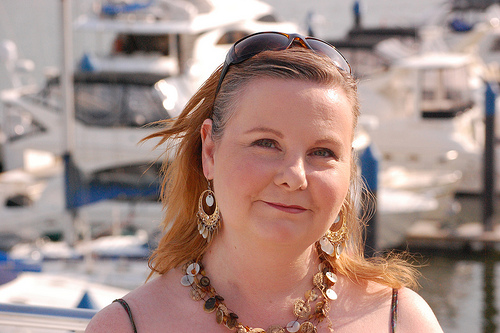 Not everyone out there has a kitchen they can use: some people live outdoors, some have rooms in hotels, boarding houses, or private homes that don’t allow them to cook, and some people are just New Yorkers.
Not everyone out there has a kitchen they can use: some people live outdoors, some have rooms in hotels, boarding houses, or private homes that don’t allow them to cook, and some people are just New Yorkers.
How do you eat under those circumstances if it’s unrealistic to expect to eat at restaurants all the time? It’s doable; like all workarounds, it’s not tremendously easy, but it’s well within the possible.
But first, you need some stuff. In the Vancouver area, I recommend Value Village, which tends to be a bit cheaper than the Salvation Army, and St. Vincent de Paul’s is cheapest of all.
Plate, cereal bowl, knife, fork, spoon, mug, and drinking glass are your starter kit. When you can, add a big, long-handled stirring spoon and some of these:
- a blender or food processor. Noisy buggers, so don’t use them late at night if you’ve got neighbors, but they can whip up a soup, a sauce, a milkshake, or a healthy and cheap dip like hummus in seconds. What good is sauce if you’ve got no noodles, you ask? Read on…
- electric kettle. This is truly Canada’s greatest contribution to the modern world, is it not? If you’ve got an electric kettle you can do ramen, tea, coffee (not just instant either!), rice, instant potatos or soup, all kinds of noodles (the very thin ones only, though: leave them to soak. Rice or bean thread noodles are best), and even eggs.
- a cooler. The styrofoam ones are dirt cheap, and they last forever or until you sit on them at least. You need to source some ice for this, though; you’ll be adding ice every day at least. Use clean ice in your cooler; it really matters.
- some plastic food containers. Not too many, as lots of decent foods come in perfectly reusable containers as well.
- popcorn popper. Maybe it’s a frill, but it’s probably also five bucks and will make you friends, guaranteed.
- microwave. Test it before you take it home, because more than half of them are useless clunkers. While you’re in the store, check the cookbook section for old Seventies microwave cookbooks.
- a big, heatproof bowl like Pyrex for soaking your noodles, Chinatown dried shrimp or veggies, etc in. You can use a pot instead if you’ve got one. Fish the things out with a fork or get a strainer (much easier!).
That’s enough to get you started. With this you can make rice noodles soaked in the bowl with sauce made in the blender, soft-boiled eggs, ramen, popcorn, instant soups and noodles, coffee, tea, and smoothies. It’s not a smorgasbord, but it’s a start.
















timethief
June 2, 2007
I would add like to add to your list:
a wok
a cast iron frying pan
a large covered saucepan.
All of them can be found for very low prices in secondhand stores.
timethief
June 2, 2007
Crap! I clicked the submit before I was done. Although this article is about meals without kitchens the 3 items I have listed are all capable of being used over the barbecuing pits found in some parks.
raincoaster
June 2, 2007
Thanks for the clarification: I was having a “huh?” moment there for a sec. In a pinch, a wok with a lid can act as both fry pan and saucepan. Cast iron is great, particularly if you fry acidic things like tomatoes, because then iron is actually released into the food, but they are HEAVY buggers, that’s the limitation there.
Interestingly, I’m not aware of any parks on the East Side of Vancouver that allow bbq’s: they’re ALL on the West Side as far as I can tell.
timethief
June 4, 2007
Too bad about the lack of bbq’s in East Side parks. I would think their would be just a greater need for them there than in the West end.
Anyway, I still have the 9″ diameter cast iron frying pan I had when I was in college as well as the same wok and saucepan. I guess you could say that I’m thrifty and that I like to hang onto what I really like. ;)
raincoaster
June 4, 2007
There Is a greater need for them, for just the reason you pointed out. The problem seems to be that City Hall does not want to facilitate cooking for subsistence in parks, only recreational cooking, and therefore enables it only where it is unlikely to happen. Given the community and individual benefits of cooking and eating together, you’d hope that they would reconsider and facilitate this at some point.